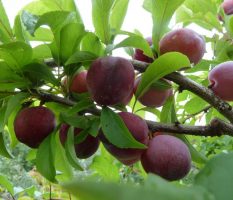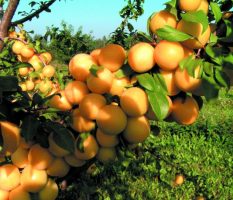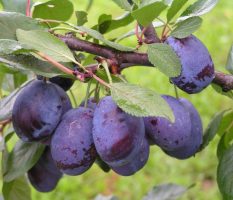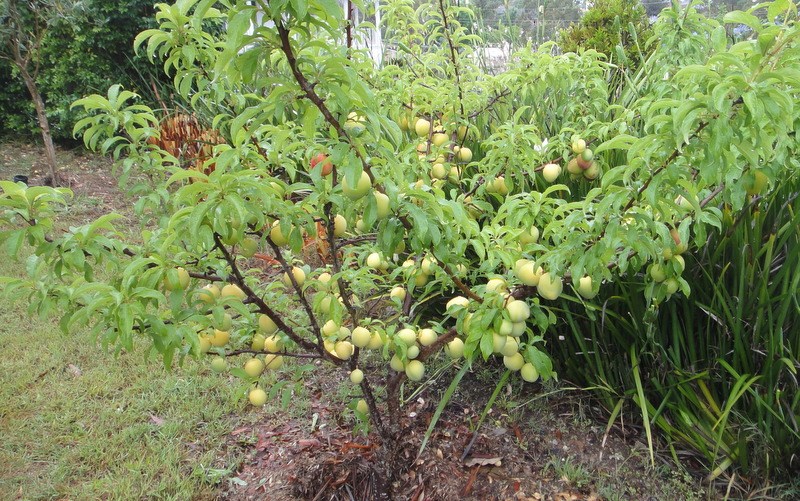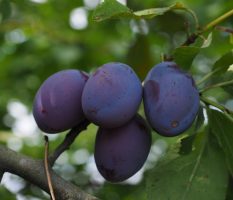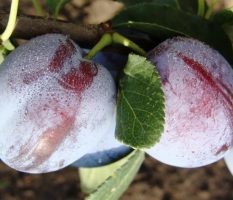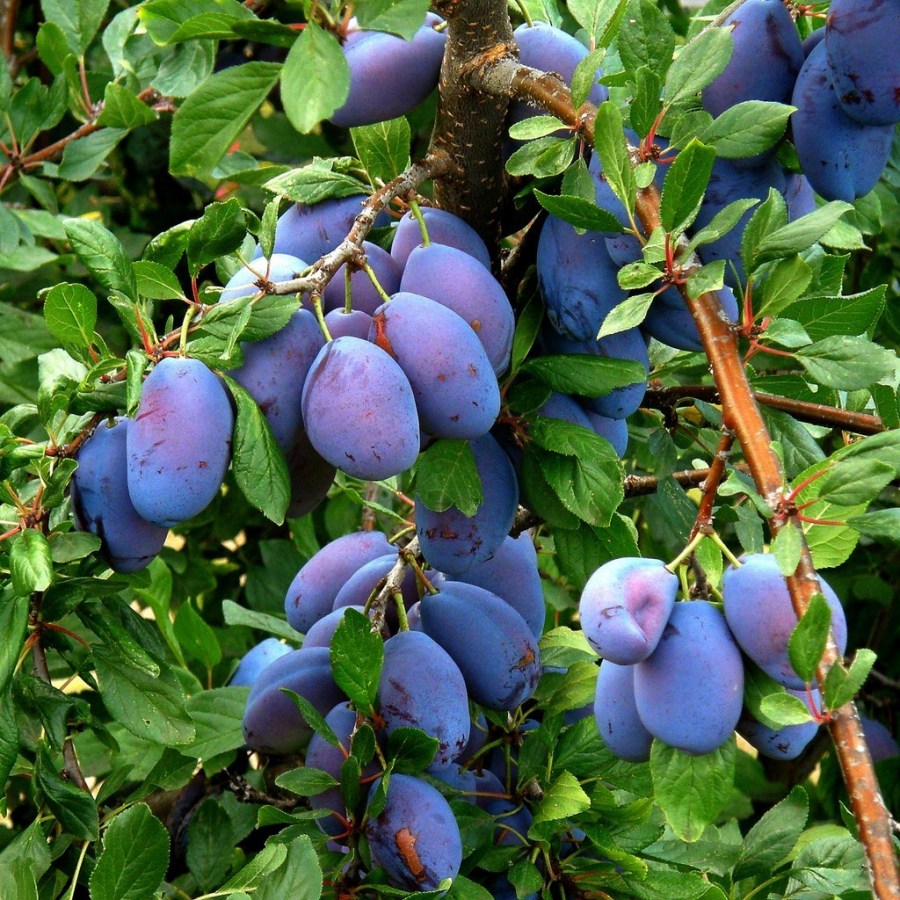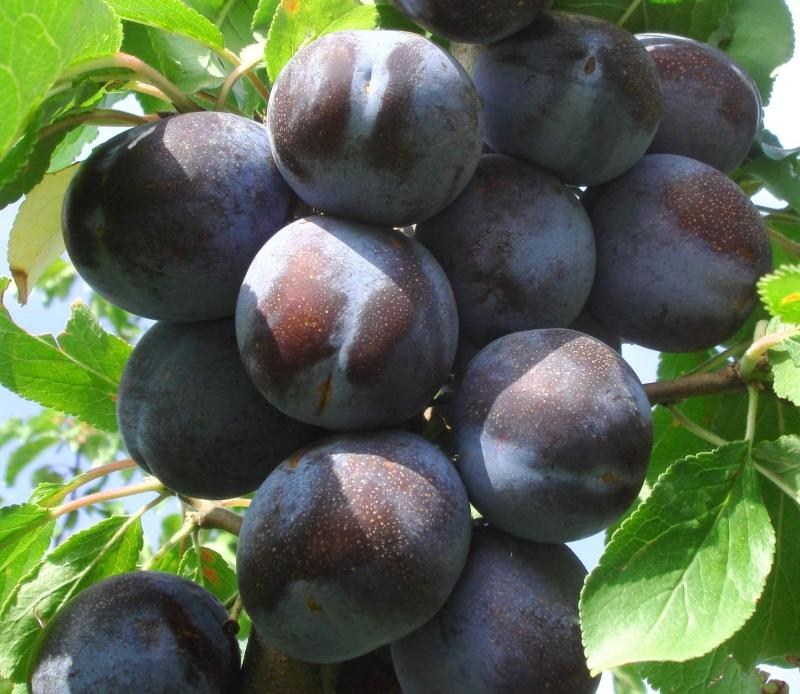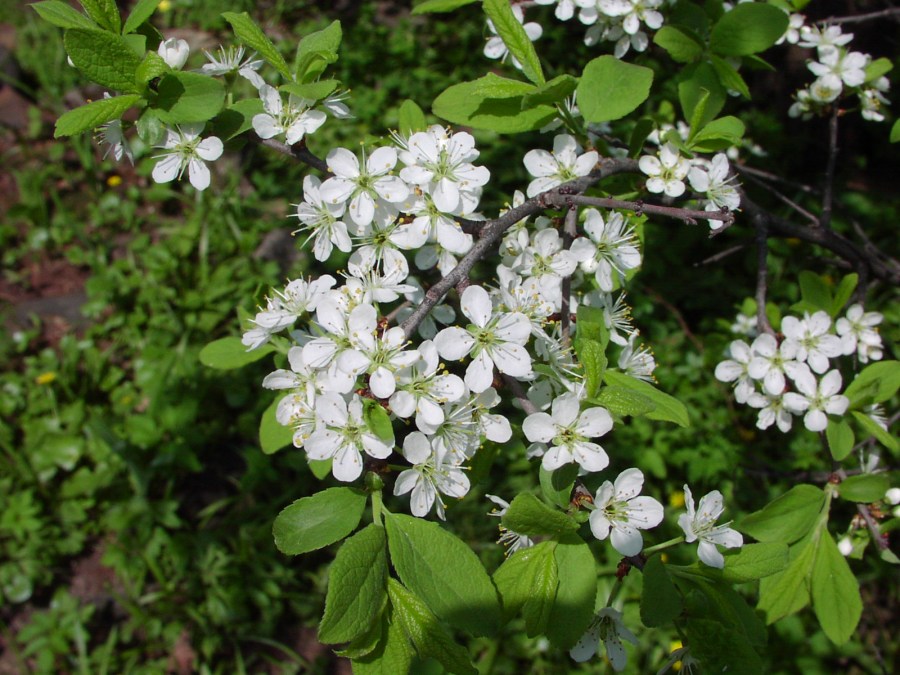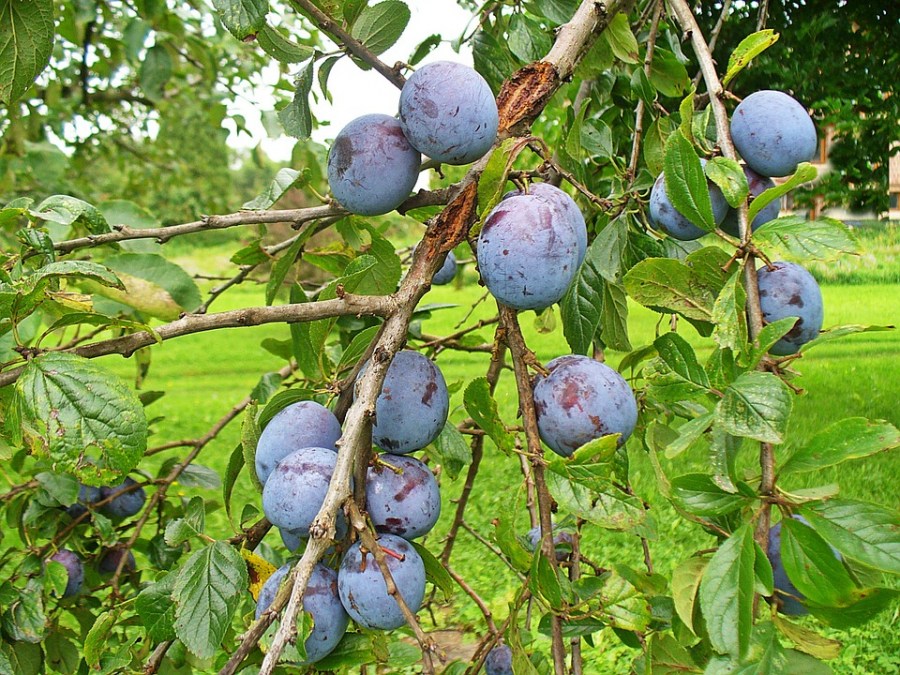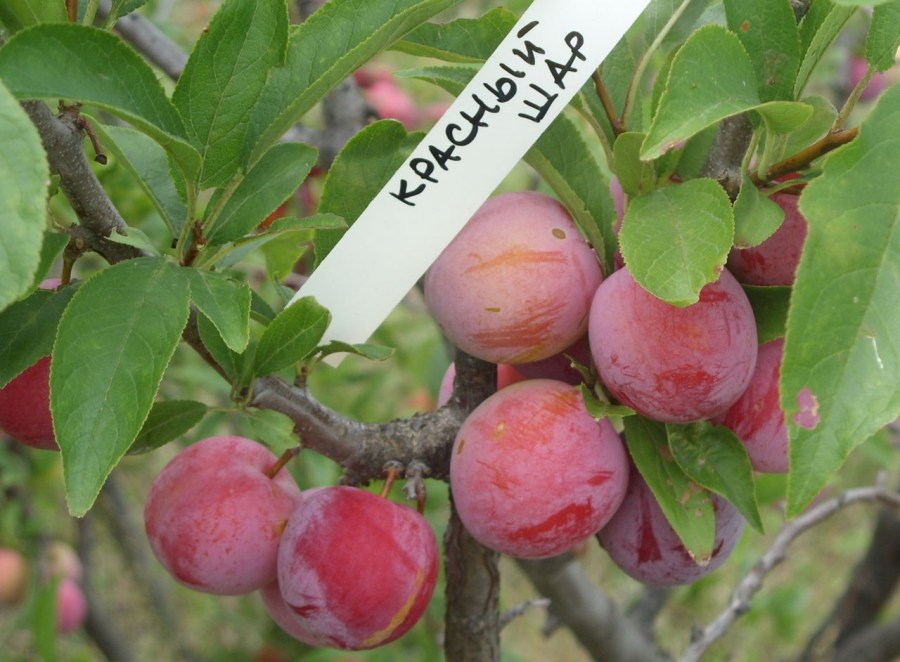Plum - how to choose a good variety and plant. Photo instruction for beginners, with useful tips from the pros
Plum is found in home gardens everywhere. The unpretentious culture pleases gardeners with good crops. Breeders bred a large number of hybrids with excellent taste. You can choose a suitable variety by looking at the photo of the plum and studying the characteristics of the options you like.
The fruit is used in raw form for the preparation of various dishes and preservation. It contains many useful substances necessary for the full functioning of the human body. A low-calorie product helps to thin the blood, remove cholesterol, and lower blood pressure.
Plum varieties
Modern types of crops can be selected for any region. Having planted several suitable varieties, you can grow your plum garden. A huge number of species will allow each gardener to find fruit to taste, and the right selection of seedlings will provide a generous harvest.
Description of varieties
Alyonushka has large reddish fruits of a round shape. The bone of this type is poorly separated. Tender and juicy pulp has a pleasant sweet and sour taste.
Stanley belongs to the group of plum-hungarian women. It has dark purple elongated fruits that can be dried. They make excellent prunes.
Golden large plum ripens in late autumn. It gives high yields, sweet and sour fruits are well stored. Mature trees are resistant to frost, drought, various diseases.
The Kuban comet is very fruitful, has small oval-shaped fruits. Tasty and juicy plums can be tasted in July and August. They ripen in parts, the bone from the pulp does not separate.
Early plum begins to bear fruit early. Requires planting a number of trees that will act as pollinators. Small fruits with a wax coating on one plant can be yellow, orange and red. This variety has a yellow, juicy pulp.
The blue gift has oval purple fruits, the aroma and sugar content of which are at an average level. Juicy flesh is yellow-green. The tree is characterized by high frost resistance, self-fertile qualities, but the fruits are light in weight.
Top hit is a late variety bred by German breeders. It has sweet, large ovoid fruits. They ripen in September and October. This species is popular, its bone separates well. Winter-resistant plum is highly transportable.
This crop grows superbly on different types of soil. It belongs to hygrophilous plants, but it does not tolerate shading by other trees, buildings.
Plum planting
In a region with a cool climate, trees are planted in spring. The plot must be prepared in advance. In areas with mild winters, the plant can be planted in September, so that it has time to take root before the onset of cold weather.
Novice gardeners do not always know where to plant a plum. Nearby should grow 1-2 trees of another variety. This will ensure stable fruiting.
You need to know how to plant a plum properly so that it delights every year with a generous harvest. It is important to choose the right place for her.
The tree prefers sunny areas and does not like strong winds. It has a branched root system, which should not be washed by groundwater. You also need to consider how much distance to leave between the seedlings.
Plum cultivation and care
When planting, fertilizers are introduced into the soil. In the early years, the tree does not need to be fed.Then every 2-3 years it is provided with fertilizers in order to achieve active growth. Top dressing is applied depending on the plant variety, season. It is required not only to ensure a good harvest, but also to protect against pests, increase the resistance of the tree to various diseases.
The best time for fertilizing is late autumn, when the soil is dug up. Mostly phosphoric, potassium compounds are used. With the onset of heat, nitrogen-containing substances are used to set fruit.
In spring, there is a lot of moisture in the soil, so the tree does not need watering. The need for water is felt during the formation of fruits in the summer. It is necessary to water the plum with the growth of shoots, a week before harvesting, in dry autumn. If there is insufficient moisture, the ovary may begin to fall from the tree.
Plum pruning is performed every year. The thinning procedure consists in removing excess branches, shortening the shoots that grow up. Last year’s growth is cut off, so that new fruit branches appear.
The work is carried out with a special tool. Slices are treated with soda var. The main and skeletal branches should be directed in different directions.
Autumn pruning is usually carried out in the southern regions, in the northern regions it is performed in the spring. In mid-September, dry and damaged branches are removed, the top is cut off if it is very stretched. All cut shoots are burned to avoid further propagation of pests.
Disease Control and Pest Control
To grow a healthy and fruitful garden every owner of a personal garden dreams of. But often you have to deal with various diseases of the culture. If measures are not taken in time, this can lead to loss of yield and even death of the tree. The most common diseases affecting plum:
- Brown spotting is manifested in characteristic spots and small black dots, which are spores of the fungus. Gradually, the spots increase, the leaves begin to curl and fall off.
- Fruit rot affects fruit that has damage.
- Curliness leads to curvature and twisting of leaves, their falling.
- Plum pockets lead to strange fruit development. They are stretched, no bones are formed.
- Sooty fungus leads to black coating of leaves.
When the first signs of disease appear, immediate action should be taken. It is better to carry out preventive measures in a timely manner.
Plum pests
Moth inflicts noticeable damage to the crop. Caterpillars of gray butterflies penetrate the ovary and grow due to the pulp of the fetus.
Aphids suck juice from leaves and fruits.
Black sawfly. Its larvae damage the flesh of the fetus and the seed.
The leaf worm deforms the leaves, fastening them into a lump.
Spraying and pest control must be carried out so that the garden remains healthy and bears fruit every year. Regular inspection of trees and the use of preventive measures will reduce the risk of infection. This will improve the yield of plums, the quality of the fruit.
Photo of plum
Design of a country house - 200 photos of the best ideas and worthy projects of private houses
Gates from corrugated board: drawings, diagrams and main projects (135 photos)
Snow shovel for home: 65 photos of popular options
Join the discussion:






